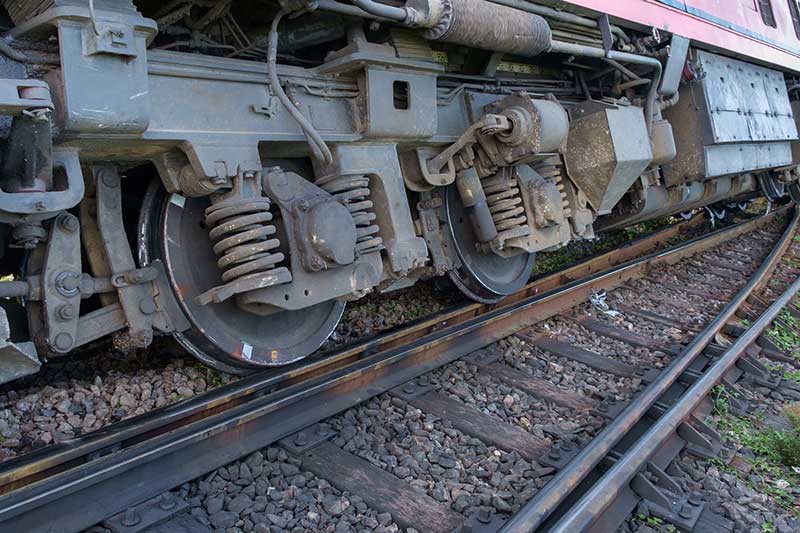AAR issues update on East Palestine, Ohio rail freight derailment
The February 3 derailment of a Norfolk Southern freight train, transporting hazardous materials, on the Ohio-Pennsylvania border has left a flurry of concern, unease, and worry in its wake.
The Association of American Railroads (AAR) issued a memorandum on the situation, replete with information on the current situation and adding that “railroads take their responsibility to move goods critical to the economy safely across the country seriously.”
In terms of the cause of the derailment, AAR said that the National Transportation Safety Board (NTSB) is serving as the lead government agency providing updates into the investigation. In a February 14 update, NTSB said that as a result of the derailment, 38 rail cars derailed and a fire ensued which damaged an additional 12 cars, adding that there were 20 total hazardous material cars in the train consist—11 of which derailed.
“NTSB is conducting a safety investigation to determine the probable cause of the derailment and issue any safety recommendations, if necessary, to prevent future derailments,” it said. “The NTSB can also issue urgent recommendations at any point during the investigation. All questions regarding the safety investigation should go to NTSB. While emergency response will be a factor in the investigation, NTSB is not involved in air monitoring, testing of water quality, environmental remediation or the evacuation orders. Questions on environmental issues should be referred to the Environmental Protection Agency.”
And it added that it is continuing to work with the investigative parties to determine what exactly caused the derailment, as well as evaluate the emergency response efforts. In its update, NTSB said its investigators identified and examined the rail car that initiated the derailment, with surveillance video from a residence showing what appeared to be a wheel bearing in the final stage of overheat failure moments before the derailment. It also noted that the tank cars are currently being decontaminated and upon completion of the process, NTSB investigators will return to Ohio to complete a thorough examination of the tank cars.
“Interested parties should let the investigation proceed,” said AAR. “As the NTSB’s work continues, any speculation as to the cause or contributing factors that lead to the incident is just that—speculation—and undermines the overall fact-gathering process. Additionally, immediate pushes for legislative or regulatory action absent of NTSB results and in response to the accident is premature at best—and opportunistic at worst. Interested parties should consider the available facts on rail safety, immediate ‘solutions’ to enhance safety permeating some coverage and the potential motivations of the loudest voices alleging a fundamental failure in U.S. railroading.”
Taking that a step further, AAR cited an Associated Press report stating that the railroad industry is generally regarded as the safest option for most goods, with federal data showing that accidents involving hazardous materials are “exceedingly rare.” It also cited a USA Today report indicating that the last reported death from a hazardous material on a train was in 2011.
“Overall, railroads are safe,” said AAR. “While 99.9% of all hazmat shipments reach their destination without impact, the less than .1% have the potential to dramatically impact the communities serve. Railroads take this responsibility seriously and have no higher priority than safety. The industry’s first goal is to prevent an accident before it can happen. The American Society of Civil Engineers (ASCE) gave rail its highest grade in their infrastructure report card in part because of the annual $20 billion in private investments in maintaining and improving network. At its core, a well-maintained railroad is a safe one and thanks in part to those investments rail remains the safest way to move hazmat overland.”
AAR also said that going back to 2012, the hazmat accident rate has come down 55% and over the last 10 years, less than 1% of all train accidents have resulted in a hazmat release.
NS CEO response: In a letter to residents of East Palestine, Ohio, which is in close proximity to the derailment site, Norfolk Southern CEO Alan Shaw wrote that NS will stay in East Palestine for as long as it takes to ensure the safety of its residents and to help East Palestine recover and thrive.
“Our work is underway,” wrote Shaw. “Crews are cleaning the site thoroughly, responsibly, and safely. Our Family Assistance Center is helping community members meet immediate needs. Together with local health officials, we have implemented a comprehensive testing program to ensure the safety of East Palestine's water, air, and soil. And we have established a $1 million community support fund as a down payment on our commitment to help rebuild. But our work is far from over. As we continue site clean-up, the NTSB moves forward with its investigation, and necessary environmental testing is carried out, I promise to keep you updated every step of the way.”











